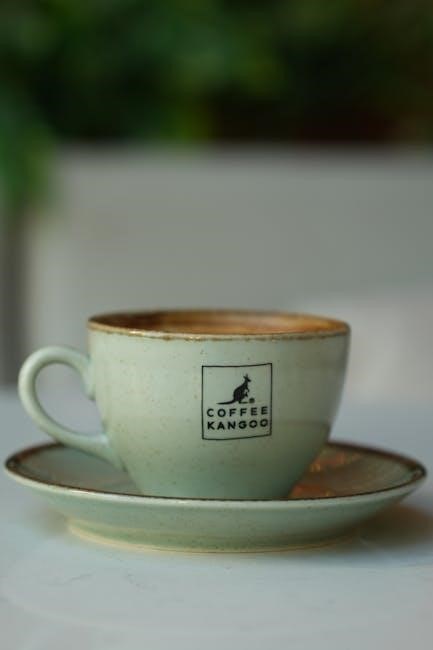The left chest logo is a timeless choice for branded apparel, blending subtlety with professionalism. Its strategic placement transforms garments into statements of brand identity, making it a gold standard for uniforms, teamwear, and merchandise. Mastering this detail ensures a polished look, while poor placement can undermine even the sharpest designs. This guide explores expert strategies, precise measurements, and essential tools to achieve flawless left chest logo placement for every garment type and size, ensuring your brand stands out with consistency and style.
Standard Placement Measurements
When it comes to left chest logo placement, standard measurements are crucial to ensure a professional and visually appealing result. The left chest area is typically defined as the region 8-10 inches below the collar and centered horizontally. This placement is widely considered the industry standard for embroidering logos on garments like t-shirts, polo shirts, and jackets.
The most common size for a left chest logo is between 3 and 4 inches wide, depending on the design and the garment. However, this can vary slightly based on the specific use case. For example, work uniforms often feature slightly larger logos, while fashion-oriented designs may opt for smaller, more subtle branding.
To achieve precise placement, measure 5-7 inches down from the top of the shoulder seam and 6-8 inches from the center front line of the garment. This ensures the logo is centered and evenly spaced. For crew-neck shirts, the logo should sit about 1-2 inches above the neckline ribbing, while for polo shirts, it should align with the top button.
Using a ruler or a digital template can help ensure accuracy. Additionally, many embroidery machines come with built-in tools to guide placement. Always double-check measurements before embroidering, as small errors can lead to misalignment. Consistency is key, especially when producing multiple garments for a brand or organization.
By following these standard measurements, you can achieve a clean, professional appearance that enhances the overall look of the garment while maintaining brand consistency.

Logo Size Considerations
Logo size plays a critical role in the effectiveness of left chest logo placement. A logo that is too large can overwhelm the garment, while one that is too small may go unnoticed. The ideal size depends on several factors, including the design complexity, the garment type, and the intended use of the item.
For most left chest placements, a logo measuring 3 to 4 inches in width is considered standard. However, this can vary. For example, intricate designs with fine details may require a slightly larger size to maintain legibility, while minimalist designs can be smaller without losing impact. Additionally, the purpose of the logo matters: promotional items may benefit from a larger logo to maximize visibility, while fashion-focused designs might opt for a more subtle size.
The logo’s height typically follows a 2:3 to 1:3 ratio relative to its width, ensuring it remains proportionate. For instance, a 3-inch-wide logo might be 1.5 to 2 inches tall. This ratio helps maintain balance and prevents the logo from appearing stretched or compressed. It’s also important to consider the font size if the logo includes text, ensuring it is large enough to read easily but not so large that it dominates the design.
Fabric type and thickness can also influence size choices. Thicker fabrics, such as those used in jackets, may require slightly larger logos for visibility, while lightweight fabrics like cotton can accommodate standard or smaller sizes. Ultimately, the goal is to strike a balance between prominence and subtlety, ensuring the logo enhances the garment without overpowering it.
By carefully evaluating these factors, you can determine the optimal size for your left chest logo, ensuring it communicates effectively while maintaining a professional appearance.
Anchor Points for Accurate Placement
Anchor points are essential for ensuring precise and consistent placement of left chest logos. These reference points guide where the logo should be positioned to achieve a professional and balanced look. The most common anchor points are the center of the chest, the bottom of the neckline, and the left seam of the garment.
The center of the chest is often considered the primary anchor point. This is typically located 1-2 inches below the neckline, depending on the garment type. For most shirts, the center point is about 6-8 inches below the top of the shoulder seam. This ensures the logo is centered and visually appealing. To find this point, measure across the chest from one side seam to the other and mark the midpoint.
The bottom of the neckline serves as a secondary anchor point, helping to establish the vertical placement of the logo. For standard placement, the bottom of the logo should align with the bottom of the neckline or be slightly above it, depending on the design. This ensures the logo sits naturally on the chest without appearing too high or too low.
The left seam of the garment is another important reference point. Aligning the left edge of the logo with this seam ensures symmetry and prevents the logo from appearing off-center. For garments with no left seam, such as jackets or hoodies, use the center point as the primary guide and adjust as needed for proper alignment.
By using these anchor points, you can achieve consistent and accurate logo placement, ensuring a polished and professional finish every time.

Garment-Specific Placement
Garment-specific placement is crucial for ensuring the left chest logo complements the design and functionality of the clothing. Different types of garments, such as t-shirts, hoodies, jackets, and polos, may require slight adjustments to achieve the best results.

For t-shirts, the left chest logo is typically placed 1-2 inches below the neckline and aligned with the center of the chest. However, for hoodies and sweatshirts, the logo should be positioned slightly higher to avoid being obscured by the hood or zipper. A common rule of thumb is to place the logo 3-4 inches below the neckline on hooded garments.
Jackets and outerwear often require a slightly lower placement to accommodate larger designs or embroidery. The logo should be positioned between 4-6 inches below the neckline, ensuring it is visible when the jacket is zipped or buttoned. Additionally, the logo should not interfere with pockets, zippers, or other design elements.
For polo shirts and button-down shirts, the placement should account for buttons and buttonholes. The logo is typically placed 1-2 inches above the top button, ensuring it does not overlap with the buttons when the shirt is worn open. This creates a clean and professional appearance.
Understanding garment-specific placement ensures that the logo enhances the overall design of the clothing while maintaining functionality and aesthetics.

Tools for Precise Placement
Achieving precise left chest logo placement requires the right tools to ensure accuracy and consistency. These tools help in measuring, marking, and aligning the logo correctly on the garment.
A ruler or measuring tape is essential for determining the exact distance from the neckline and side seam. For embroidery or printing, a template or stencil can be used to outline the logo’s dimensions and position. This helps in visualizing the final placement before any permanent application.
A heat press ruler or alignment grid is particularly useful for heat transfer printing. It provides a clear grid system to align the logo accurately on the chest area. For embroidery, a stabilizing hoop or embroidery frame ensures the fabric remains taut, preventing movement during stitching.
Digital tools like logo placement software or online templates can also be used to simulate the logo’s position on a virtual garment. These tools allow for adjustments and previews before physically applying the logo. Additionally, a laser alignment guide can project the logo’s outline onto the fabric, ensuring pinpoint accuracy.
Using these tools ensures that the left chest logo is placed consistently and professionally, regardless of the garment type or design complexity.

Fabric Considerations
Fabric type plays a significant role in left chest logo placement, as different materials have unique properties that affect both the placement process and the final appearance of the logo. For instance, heavier fabrics like denim or canvas require slightly larger logos for optimal visibility, while lighter fabrics such as cotton or polyester can accommodate smaller designs without compromising clarity.
Stretchy fabrics, commonly found in activewear or fitted t-shirts, pose a unique challenge. These materials may distort slightly during wear, which can affect the logo’s shape and alignment. To address this, it’s important to consider the fabric’s elasticity when determining the logo’s size and placement. Using a stretchable heat transfer or embroidery thread can help maintain the logo’s integrity.
Fabric texture also influences logo placement. Smooth, even textures like those found in standard t-shirts provide an ideal surface for crisp, detailed designs. Conversely, heavily textured fabrics may require adjustments to ensure the logo remains legible and visually appealing. In such cases, simpler designs or larger fonts are often more effective.
Fabric weight is another critical factor. Thicker fabrics can make logos appear smaller, so slightly increasing the logo size may be necessary for visibility. Conversely, lightweight fabrics may require smaller logos to prevent overwhelming the garment’s appearance.
Ultimately, understanding the fabric’s characteristics ensures the logo is both visually striking and professionally placed.

Legibility and Font Size
Ensuring the legibility of your left chest logo is crucial for making a professional and impactful impression. The font size and style you choose must be clear and easily readable from a reasonable distance. A common mistake is using overly intricate fonts or excessively small text, which can make the logo difficult to decipher.
A general rule of thumb is to keep the font size proportional to the logo’s dimensions. For standard left chest logos, the text height should typically range between 0.25 inches and 0.5 inches, depending on the design. Larger fonts may be appropriate for bold, modern designs, while smaller fonts are better suited for minimalist or vintage aesthetics.
When selecting a font, consider its thickness and stroke width. Thin fonts can easily get lost on busy backgrounds or textured fabrics, while thicker fonts tend to be more visible. Serif fonts, with their decorative flourishes, are often less legible at smaller sizes compared to sans-serif fonts.
For multi-line text, ensure proper spacing between lines to avoid overcrowding. A minimum of 0.125 inches of space between lines is recommended for readability. Additionally, avoid using too many words, as this can make the logo appear cluttered and diminish its visual appeal.
Testing the logo on an actual garment is essential to confirm its legibility. If the text is hard to read or the design feels overwhelming, adjustments to the font size or style may be necessary. Striking the right balance ensures your left chest logo is both visually appealing and easily understandable.

Size Adjustments for Different Garments
When designing a left chest logo, it’s essential to consider the size adjustments needed for different types of garments. The logo size that works well on a t-shirt may not be appropriate for a hoodie, jacket, or button-up shirt. Larger garments, such as sweatshirts or coats, often require slightly bigger logos to maintain visibility and proportion, while smaller items like youth tees or polo shirts may need smaller logos to avoid overwhelming the design.
The thickness and type of fabric also play a role in determining the ideal logo size. For example, heavy or textured fabrics like fleece may require bolder or slightly larger designs to ensure the logo remains clear. Conversely, delicate fabrics like silk or rayon may benefit from smaller, more subtle logos to prevent the design from appearing too heavy or overwhelming.
Additionally, the logo size should be adjusted based on the intended use of the garment. For instance, logos on athletic wear or work uniforms may need to be slightly larger for better visibility, while logos on casual or fashion-oriented garments can be smaller and more understated. Ensuring the logo is appropriately scaled for the garment ensures a polished and professional appearance.
Finally, it’s important to test the logo on different garments before finalizing the design. This step helps identify any necessary size adjustments and ensures consistency across various products. By tailoring the logo size to the specific garment, you achieve a balanced and visually appealing design every time.

Avoiding Common Mistakes
When placing a logo on the left chest area, there are several common mistakes to watch out for to ensure a professional and polished result. One of the most frequent errors is improper alignment, where the logo is not centered or straight, leading to an unbalanced appearance. Another mistake is inconsistency in logo placement across different garments, which can make a brand look unprofessional. For example, ensuring the logo is the same distance from the collar and left seam on every garment is crucial for a cohesive look.
Overlooking the relationship between logo size and fabric type is another pitfall. Placing a large logo on a small or delicate fabric, such as silk, can overwhelm the garment, while a small logo on a thick or textured fabric may be hard to see. Additionally, neglecting to consider the stretch of the fabric can result in a distorted logo when the garment is worn.
A common mistake is forgetting to account for the space around the logo. Leaving insufficient clearance can make the design appear cramped, while too much space can make it look isolated. Another error is ignoring the legibility of the logo, especially when using intricate fonts or colors that blend with the garment’s color.
Finally, failing to test the logo placement on a physical garment before production is a mistake that can lead to costly revisions. Always double-check the placement using a template or sample to ensure accuracy and consistency. By addressing these issues, you can avoid common pitfalls and achieve a flawless left chest logo placement.

Stabilization During Embroidery
Proper stabilization is essential during the embroidery process to ensure the left chest logo is sewn accurately and evenly. Without adequate support, the fabric may stretch, distort, or shift, leading to misaligned stitches or an uneven finish. The key to achieving crisp, professional embroidery lies in using the right stabilizing materials and techniques;
There are several types of stabilizers available, including cut-away, tear-away, and water-soluble options. Cut-away stabilizer is the most durable and is recommended for heavy or stretchy fabrics like cotton, polyester blends, and knits. Tear-away stabilizer is suitable for lightweight fabrics and is easier to remove post-embroidery. Water-soluble stabilizer is ideal for delicate fabrics but requires careful handling to avoid damaging the material.
Before embroidering, ensure the fabric is tightly hooped to prevent movement during stitching. The hoop size should match the logo dimensions to maintain even tension. For left chest placement, the hoop should be positioned so that the logo is centered and aligned with the garment’s natural lines. Proper tension ensures that the fabric doesn’t pucker or sag, which can affect the logo’s appearance.
Additional support, such as a topping stabilizer, may be needed for fabrics prone to fraying or distortion. This layer sits on top of the fabric to keep it stable during stitching. After embroidery, carefully remove the excess stabilizer, taking care not to pull or stretch the fabric. Proper stabilization ensures a smooth, professional finish for your left chest logo.
Back Logo Considerations
When incorporating a back logo into your design, it’s essential to consider how it complements or contrasts with the left chest logo. The back logo often serves a different purpose, such as displaying a tagline, slogan, or larger branding element, while the chest logo is typically more subtle. Balancing the two ensures a cohesive and professional look.
The size and placement of the back logo depend on the garment and the desired visual impact. Generally, the back logo should be larger than the chest logo, ranging from 8 to 12 inches in width, depending on the fabric type and design complexity. It should be centered on the upper back, aligning with the shoulder seams for symmetry. Avoid placing the logo too low, as it may appear out of proportion.
Fabric type plays a significant role in back logo placement. Thicker fabrics like sweatshirts or fleece can accommodate larger, more detailed designs, while lighter materials may require simpler logos to prevent distortion. Additionally, the back logo should not overcrowd the design if a front logo is present. Ensure there is enough spacing between the two to maintain visual balance.
Consider the logo’s integration with the left chest logo. While they don’t need to match exactly, they should share a common theme or color scheme for consistency. Legibility is crucial, especially for text-based logos, so choose a font size and style that remains clear from a distance. By thoughtfully designing and placing the back logo, you can create a harmonious and polished final product.
